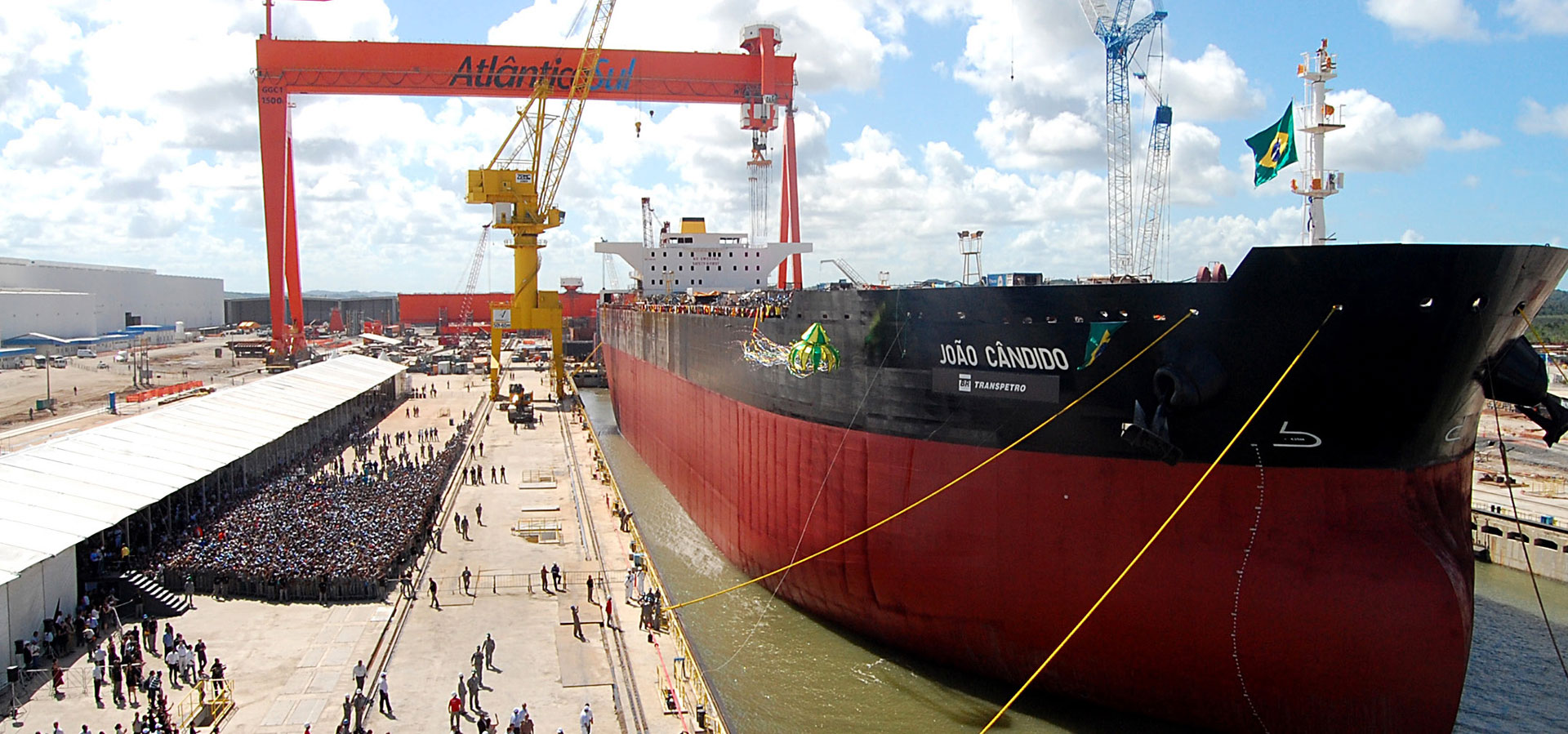Dock gate and drainage system design for Suape Shipyard Brazil

A key impetus for the development of Atlântico Sul was the recent discovery of the Tupi oil field near the coast of Rio de Janeiro, thought to contain up to eight billion barrels of oil. Atlântico Sul is also ideally placed for building and launching ships to drill for oil in the Gulf of Mexico and the coast of West Africa, both large oil and natural gas production regions.
Royal HaskoningDHV was commissioned in 2007 by Estaleiro Atlântico Sul, the company building and operating the shipyard, to design the 75-metre main entrance gate for a new drydock. This included the innovative original concept and detailed design stages, as well as procedures for installing, maintaining and operating the gate. Royal HaskoningDHV was then further commissioned by EPC, the consultant company designing the dock itself, to advise on the design and construction of the drydock underfloor drainage system and flooding valve.
“Royal HaskoningDHV adapted one of their unique dock gate designs to meet the particular requirements of EAS’s new drydock at Suape. Their experience and expertise has been much appreciated and we are pleased to have had their contribution to the successful completion of the drydock facility.”
Royal HaskoningDHV's Project Director, said: “We have more than 40 years experience of designing drydocks and dock gates, and has been involved in shipyard projects in many different countries throughout the world. We were very pleased to have the opportunity to bring our dock gate design experience to the Suape project and also to advise EPC on the design and construction of the drydock .”
The inverted ‘T’ design floating dock gate used at Atlântico Sul was initially developed by Royal HaskoningDHV for a 131-metre gate in Korea in the late 1970’s. Its gravitystabilised design ensures its suitability for very wide dock entrances and it is also ideal for shipyards with only one dock gate, as the gate can be fully maintained while in service. The gate is symmetrical and reversible, so can be floated out, turned around, and then brought back in the opposite way so the other side can be maintained or repaired while it remains in operation.
The 75-metre dock gate for Atlântico Sul took six months to build and was partially constructed in China, then shipped to Brazil to be fully fitted out and completed. Although economically beneficial, the dual location posed some logistical complications for on-site inspections.
Shipping the gate to Suape also slowed the final stages of production as some components could only be added when the gate was in its final location.
As well as designing the dock gate, Royal HaskoningDHV also worked in an advisory capacity with EPC, the engineering project consultant commissioned to design the 400-metre by 73-metre drydock. This specially constructed area, where the ships are built, is 12-metres below ground at sea bed level. Once construction of the vessel is complete, the dry dock is flooded to float the ship out to sea.
Royal HaskoningDHV used its long-term expertise to advise on the dry dock underfloor drainage system and flooding valve. The team also worked to overcome challenging ground conditions since the site was previously a mangrove swamp and the ground was soft clay. This was unsuitable for supporting the heavy loads from the large pieces of ship and the cranes used in their construction. Royal HaskoningDHV assisted in developing an effective and economical solution in the form of in-situ concrete piling which distributed the weight of the drydock towards deeper stronger subsoil material.
After three years of construction, Atlântico Sul shipyard was completed in May 2010, and is an impressive milestone in Brazil’s progress towards developing a modern, internationally competitive shipbuilding industry.
The shipyard has already been commissioned by Transpetro, a division of Brazil’s government-owned energy company Petrobras, to build a further 22 vessels and there are plans to construct another drydock at the port. The sheer scale of the shipyard will reduce the time needed to construct specialised vessels for transporting offshore drilling equipment and the shipyard features a 680-metre long quay area dedicated for the construction and repair of offshore oil platforms.
The completion of Atlântico Sul was celebrated with the launch of a newly constructed Suezmax tanker by Brazil’s President Luiz Inácio Lula da Silva with representatives from Royal HaskoningDHV in attendance. An impressive 274-metre vessel capable of carrying one million barrels, of oil, the Suezmax is one of the vessels which will be essential to ensuring the future development of Brazil’s oil producing industry.
Project facts
- LocationBrazil
- ClientEstaleiro Atlântico Sul

AdrianArnold
Sector Director Shipyards